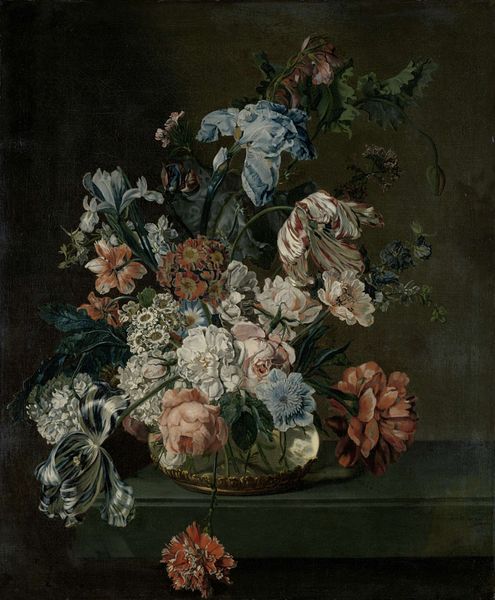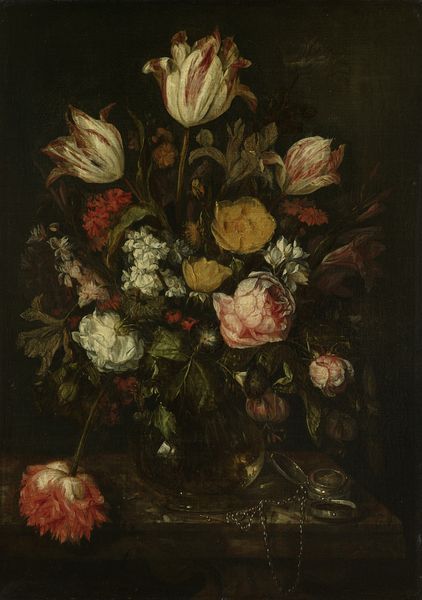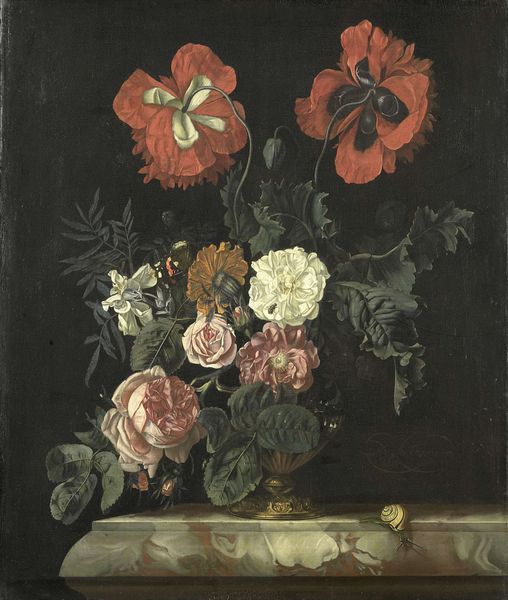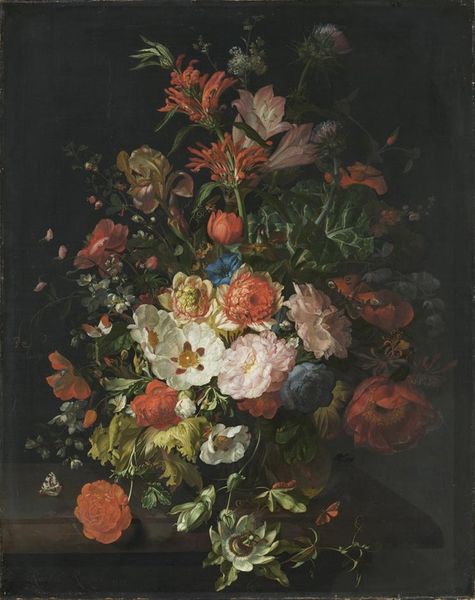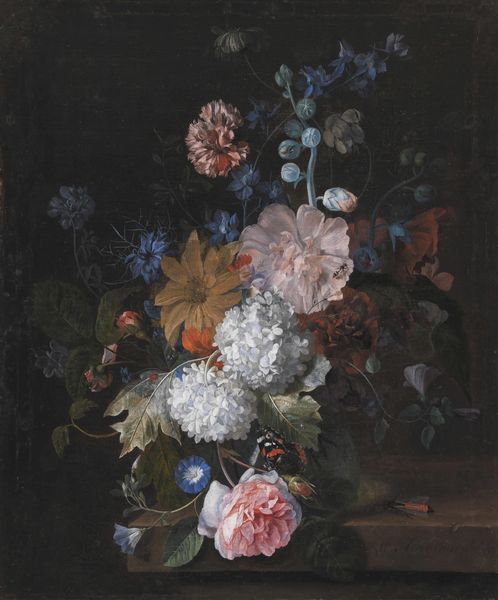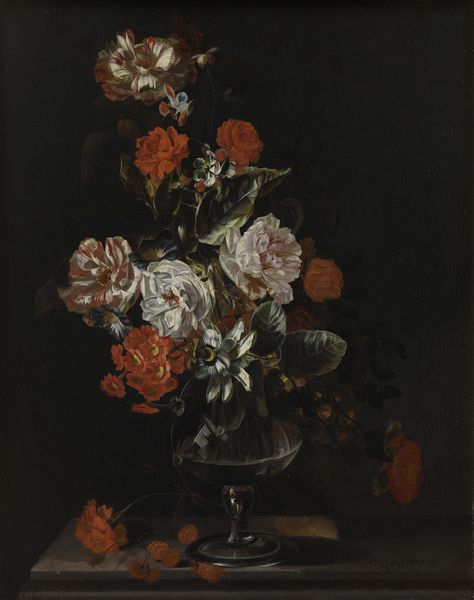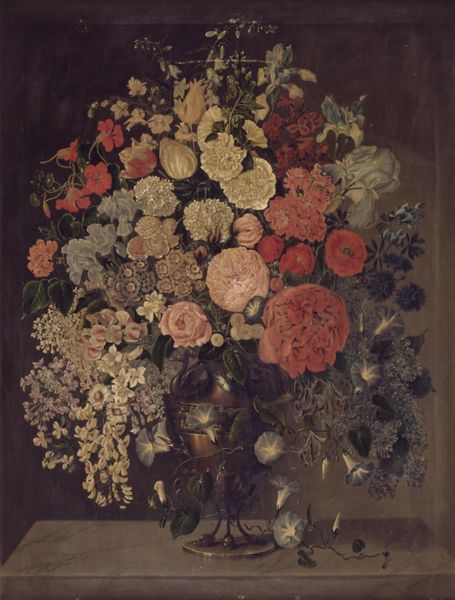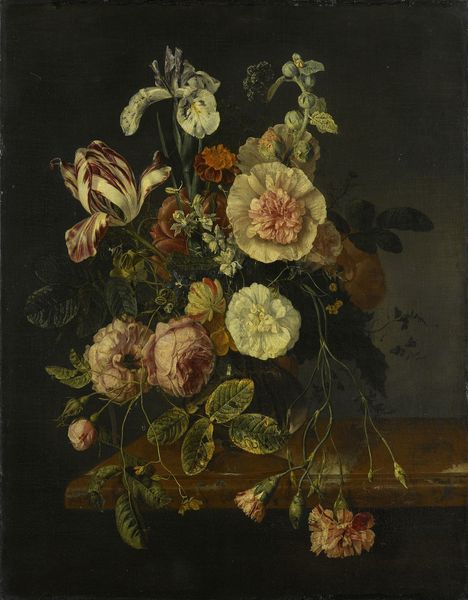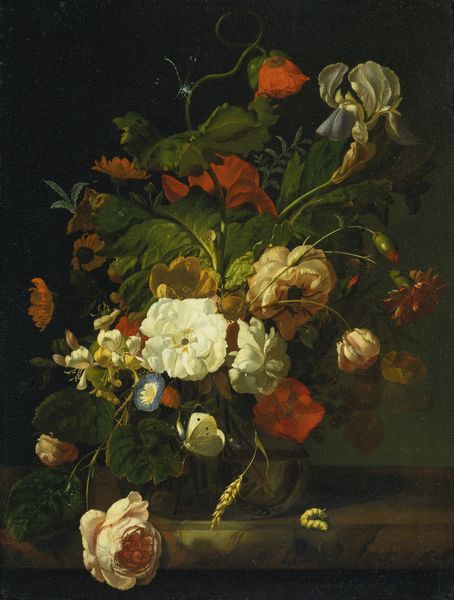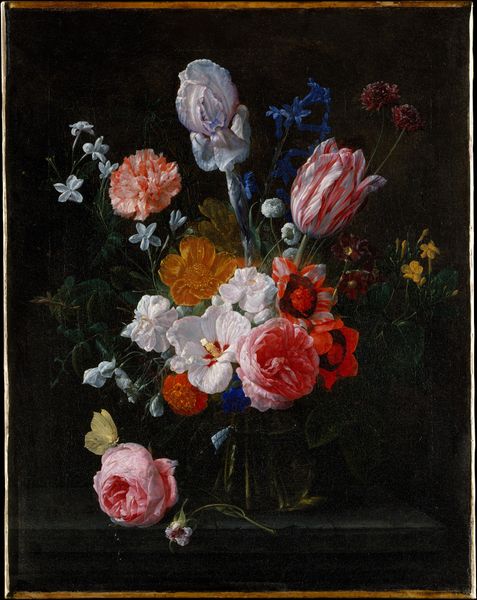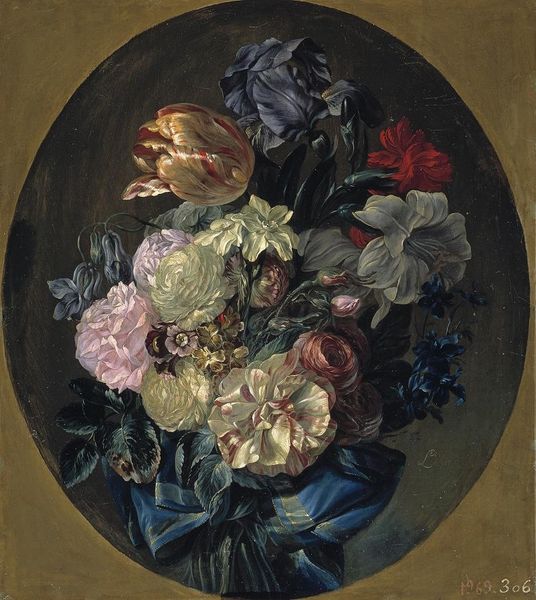
painting, oil-paint
#
gouache
#
baroque
#
dutch-golden-age
#
painting
#
oil-paint
#
oil painting
Copyright: Public domain
Curator: This is "Flower Still Life" painted by Rachel Ruysch in 1742. Ruysch was a renowned Dutch Golden Age painter, specializing in detailed flower paintings. Editor: It strikes me as opulent, even slightly overwhelming. The dark background really makes the colors pop, doesn't it? You get this immediate sense of abundance. Curator: Absolutely. It's important to note that floral paintings during this period weren't just pretty pictures; they often carried symbolic meanings. Think of it as a reflection of the cultural fascination with botany and exploration, especially in the Dutch context where the tulip trade was booming, and impacting social status. Editor: So, this lush depiction wasn't just about surface beauty? How about her method? I am fascinated by her command over oil paint to convey the textures here – almost tangible. The way she creates a kind of artifice that reflects status and wealth in the Dutch republic by employing oil paint. Curator: Well, she comes from a line of scientists and artists, with her father, Frederik Ruysch, being a botanist and anatomist. Rachel used her scientific upbringing, understanding plants intimately to imbue those details into her craft, creating paintings of striking realism and that pushed the genre toward innovation. We need to view Rachel as one of those people contributing to the new empirical view, as well as the aesthetic understanding of it all. Editor: That resonates. Looking closely, you notice the imperfections – a drooping petal, a fading leaf. It adds to this almost urgent awareness that everything is impermanent. Which speaks a lot about the means of producing something considered beauty, by exploiting living material that dies and fades. I think it is not necessarily only allegorical. Curator: I see what you mean, yes! We're grappling with themes of mortality, transformation and temporality – which is also characteristic for Baroque period aesthetics, it becomes almost like a conversation about ecological relationships. Editor: A thought-provoking combination, where materiality of things interacts and brings complex issues into being. Ruysch’s skill is undeniable, and this work makes us contemplate about the fleeting nature of beauty and life in relation to wealth, consumption and materiality in Dutch golden age society. Curator: Agreed. Examining Rachel Ruysch is like opening a dialogue with both art history and a larger picture of social issues. Editor: Well said! It's always thrilling when a piece of art encourages a debate that transcends time.
Comments
No comments
Be the first to comment and join the conversation on the ultimate creative platform.
